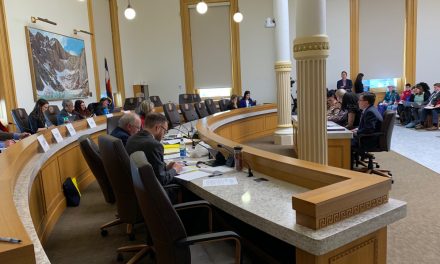The Centers for Disease Control and Prevention (CDC) recently published guidance to help achieve “health equity” and to promote the importance “of addressing all people inclusively and respectfully.”
The federal agency, which operates under the U.S. Department of Health and Human Services, insists that “Health Equity Guiding Principles for Inclusive Communication” is not a style guide, but is a “living document,” that will “provide principles, resources, and specific suggestions on a variety of topics to help inform an inclusive approach to public health communications.”
The CDC explains, “Long-standing systemic social and health inequities, including some that have been introduced or exacerbated by federal, state, and local policies, have put some population groups at increased risk of getting sick, having overall poor health, and having worse outcomes when they do get sick. Avoid perpetuating these inequities in communication [their emphasis].”
The agency encourages “all public health professionals and partners at the federal, state, and local levels” to use a “health equity lens” when “framing health disparities and discussing public health implications.”
Health care professionals should, of course, consider the community and groups they are serving, and they should treat all people with respect and dignity. And some of the guidelines make sense, including advice to not use caricatures of racial or ethnic groups and not to use images of men and women who are unhealthily thin in communications and presentations.
But the CDC guide shows that they are embracing extremist ideologies, such as critical race theory (CRT) and LGBT activism, and promoting these in their guidance.
For example, the guidance says, “Health equity is intersectional. This means that individuals belong to more than one group and, therefore, may have overlapping health and social inequities, as well as overlapping strengths and assets.”
“Intersectionality” comes straight out of CRT; the term was coined by lawyer and activist Kimberlé Williams Crenshaw to describe how various aspects of a person’s identity –race, sex, language, “gender identity,” ethnicity or faith – creates a hierarchy of power and oppression for different individuals.
The “Preferred Terms for Select Population Groups and Communities” has a long section on “sexual orientation” and gender identity,” and it suggests not using “gendered pronouns,” such as she, her, he or his. Instead, health care professionals should try “singular they or their” or use the phrase “he/she/they” to be inclusive.
The CDC joins other federal agencies in promoting various LGBT identities, suggesting “LGBTQ (or LGBTQIA or LGBTQ+ or LGBTQIA2).” Forget about the scientific, biological reality of people being born either male or female (except for extremely rare intersex conditions affecting about 50,000 individuals in the U.S.), the CDC lists other “preferred terms” to use, such as:
- Queer
- Pansexual
- Asexual
- Transgender
- Assigned male/female at birth
- Designated male/female at birth
- Gender non-conforming
- Two-spirit
- Non-binary
- Genderqueer
- Gender diverse
- People/person with intersex traits
The agency has long used the term “men who have sex with men” (MSM) when discussing health issues within that group. It did so because not all MSM identify as gay or bisexual – or even have same-sex attractions. But now, the CDC prompts people to use MSM “to mean people who report being male at birth and having had sex with a person who was male at birth, regardless of self-identified sexual orientation.”
That definition will probably change as soon as the CDC hears from transgender activists who believe that “trans men are men” and that you can be born female but “transition” to being a man.
The guidance also suggests not using terms like “illegal immigrants” or “illegal migrants.” Instead, health workers might try using “people with undocumented status” or the convoluted “non-U.S.-born persons.”
Other suggestions include “persons with substance use disorder” or “persons with alcohol use disorder,” rather than alcoholic, drug user or drug addict. Instead of calling someone “elderly” or “senior,” you might try terms like “older adults” or “elders.”
The CDC lists numerous resources, references and style guides (as opposed to their own “living document”). One of these resources, the Racial Equity Institute, offers CRT ideology, saying it works to help people recognize “We live in a racially structured society, and that that is what causes racial inequity [their emphasis].” The organization also states, “inequities are caused by systems, regardless of people’s culture or behavior.”
Such systems must be disrupted and dismantled, rather than laws, individuals and groups working to provide opportunity for all.
The federal agency also refers to the “GLAAD Media Reference Guide.” GLAAD, formerly the Gay and Lesbian Alliance Against Defamation, is a non-profit LGBT activist organization with a 2020 income of $17.5 million dollars. The organization works to increase LGBT representation in all media and describes itself this way: “As the world’s largest lesbian, gay, bisexual, transgender, and queer (LGBTQ) media advocacy organization, GLAAD is at the forefront of cultural change by ensuring fair, accurate, and inclusive representation that leads to 100% acceptance.”
Such activist and left-leaning groups are helping to influence the supposedly “science-based” CDC with their ideologies.
Related articles and resources:
Biden Becomes Nation’s Most Powerful Trans Activist With Executive Order
President Biden Pleads for ‘Unity’ in First Inaugural Address, Prepares Divisive Executive Orders
Woke Medical Students and Schools: ‘Biological Sex is a Social Construct’
Photo from CDC Twitter.






